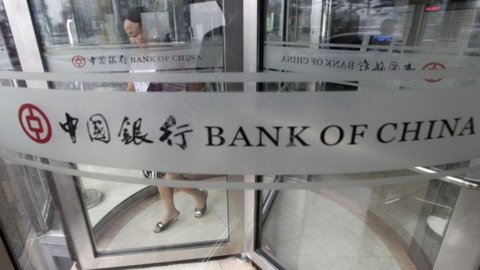In the 2013 ranking of the top 10 industrial companies by size (total tangible assets), which remains dominated by energy, the Russian Gazprom (293,1 billion) was confirmed as the largest company in the world, ahead of the Japanese Toyota (280 billion). The multinationals of emerging countries have advanced further: this year another Russian entered the top ten, Rosneft Oil (in 2012 it was 26th, then in March 2013 it took over Tnk-BP), finishing in tenth position (with 161,9 billion of assets). Today in the top 10 they have risen to four (2 Russian, 1 Chinese, 1 Brazilian), while in 2004 only Gazprom (eighth) was in the standings.
The survey shows that multinationals in emerging countries are growing faster, so much so that today they are about twice as large as they were 9 years ago. According to the Mediobanca R&D study, there are 383 multinationals in the world (of which 329 in industry, 29 in telecommunications and 25 in services) and they have a total turnover of 12.369 billion euros, employing over 32 million people. European industrial multinationals are on average the largest, followed by Asians, which in 2013 surpassed the North Americans in terms of average size.
Although thirteenth for total assets (it was 14th in 2012), the first company in the world by market capitalization is instead the US Apple (with 363,4 billion euros), ahead of the other two compatriots ExxonMobil (318,4 billion euros of capitalization ) and General Electric (205,8 billion).
The first Italian company in the world ranking of industrial multinationals was once again confirmed by Eni, which fell to 14th position with 134 billion in assets (it was 12th in 2012), while Exor rose to 18th position with 108 billion (it was 20th). Far behind was Finmeccanica (108th from 110th), with 22 billion.
No new entry in the ranking of the giants of Europe. Worth noting, however, is the overtaking of Volkswagen (265,1 billion of assets) on Royal Dutch Shell (256,1 billion), while BP (196,8 billion) maintains third place. The position of the Italian companies at European level is also stable: Eni in sixth place and Exor in eighth. Finmeccanica is 28th (it was 30th).
The giants of emerging countries have also advanced among the top 10 global telecommunications giants. The largest company in the world was for the first time in 2013 a Chinese company: China Mobile (135,3 billion in assets), which ousted the Japanese Ntt (120,8 billion), which dropped to third place after always being at the top of the ranking, also overtaken by the US Verizon Communications (121,8 billion). The Mexican America Movil (owned by the tycoon Carlos Slim) then entered the top 10 of the telecommunications companies with 50 billion, which pushed Orange out of the top ten (11th with 49 billion). The Italian Telecom Italia maintained its 12th position (32 billion).
Among the big utilities, with 130,9 billion in total assets, Enel confirmed its position as the third giant in the world (position reached in 2012) after the two French giants Edf (239,6 billion) and Gdf (131,6 billion ) and ahead of the Germans of E.On (111,3 billion).
Again according to Mediobanca's R&D survey, the giants of emerging countries have gradually eroded market shares in the triad (Europe, USA, Japan): in the last decade they have more than doubled their share of world turnover, bringing it from '11,3% to 23%.
In 2013, the West still led the East in profitability, but the East won in financial strength. Again in 2013, sales growth slowed down in the West, but the "new world" did not shine either, while only Japan showed an evident recovery. Margins are down in the West, up in the "new world", much better in Japan. In the West in 2013 only the net result improved, but thanks to the positive balance of extraordinary items.
Once again in the first quarter of 2014, industrial multinationals stagnated, with falling revenues and contracting margins in North America and Europe, while Japan continued to go against the trend, with both revenues and margins recovering. At the sectoral level, the means of transport, metallurgy (after a difficult two-year period 2012-13), mechanics and electronics seem to see positive glimmers. The energy sectors suffer above all (in line with the drop in the price of crude oil by 4,4% in the first quarter of 2014 compared to the first quarter of 2013), the food and utilities sectors. Even the balance sheet results of the multinationals do not shine, with a generalized increase in financial debts compared to equity; once again, Japan stands out against the trend.




